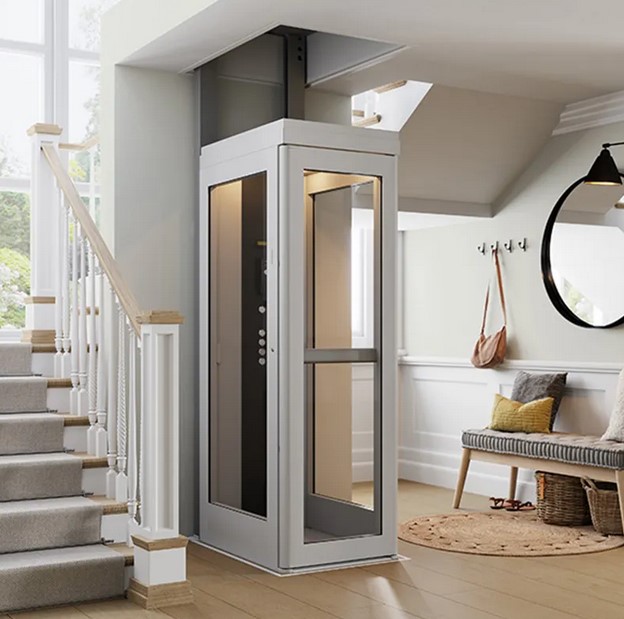London Lift Company: Providing Comprehensive Lift Solutions Throughout the Resources
London Lift Company: Providing Comprehensive Lift Solutions Throughout the Resources
Blog Article
Exploring the Globe of Lifts: Common Problems Encountered by Numerous Lift Devices
As we navigate with the vertical transport systems of modern structures, lifts stand out as a crucial element of our day-to-day lives. From hydraulic elevators to grip systems and machine-room-less styles, each lift kind comes with its set of typical concerns.
Hydraulic Lifts
Hydraulic lifts, frequently chosen for low-rise structures, use fluid stress to manage the movement of the lift car (lift repair companies). This mechanism involves a hydraulic pump pressing oil into a cylinder, triggering the lift to move in the wanted instructions. While hydraulic lifts are understood for their peaceful and smooth procedure, they do come with their very own set of typical problems
One prevalent problem with hydraulic lifts is oil leak. Furthermore, problems with the control system, such as malfunctioning shutoffs or a malfunctioning pump, can trigger disruptions in the lift's movement.
Routine maintenance and punctual repairs are crucial to make certain the smooth functioning of hydraulic lifts. By resolving these typical issues proactively, building owners can minimize downtime and make certain the safety and security and effectiveness of their vertical transport system.
Grip Elevators
When considering upright transportation systems in structures, another typical kind apart from hydraulic elevators is the traction elevator. Grip elevators run utilizing a system of ropes and counterweights that move the lift cars and truck by grasping onto the hoist ropes. This device permits smoother and much faster vertical transport contrasted to hydraulic systems.
Among the typical issues dealt with by traction elevators is rope wear. The consistent motion of the ropes within the grip system can result in deterioration gradually, possibly creating the elevator to breakdown or become risky for use. Normal assessments and maintenance of the ropes are necessary to guarantee the lift's proper functioning and safety.
An additional issue that grip lifts may encounter is associated to the control system. Problems with the control system can result in concerns such as unpredictable movement, hold-ups in reaction times, or perhaps full closures. Routine screening and upkeep of the control system are crucial to avoid such problems and guarantee the elevator's integrity.
Machine-Room-Less (MRL) Lifts

One of the key parts of MRL elevators is the portable gearless traction device that is installed within the hoistway. This maker efficiently drives the elevator vehicle without the demand for large tools discovered in traditional grip elevators. look at this web-site Furthermore, MRL elevators commonly utilize a weight system to balance the automobile, more improving their power performance.
In spite of their benefits, MRL elevators may deal with obstacles connected to upkeep and repair because of the constrained room for equipment installment. Access for servicing components within the shaft can be limited, needing specialized training for professionals. Proper upkeep timetables and regular evaluations are crucial to make certain the ongoing smooth procedure of MRL lifts.
Overloading and Weight Limit Issues
Straining and weight limit concerns are essential problems in lift operations. Lift producers design raises with certain weight capabilities to guarantee passenger security and devices longevity.
When lifts are strained, it puts excessive stress on the electric motor, cables, and various other components, possibly causing malfunctions or break downs. Safety devices such as sensors and overload sensors remain in place to prevent lifts from moving if they spot excess weight. Additionally, going beyond weight limitations can cause increased power consumption and damage on the elevator system.
To alleviate straining problems, constructing managers need to plainly display weight restrictions in elevators and enlighten occupants on the importance of sticking to these restrictions - lift repair companies. Normal upkeep checks by qualified technicians can likewise help make sure that elevators are operating within safe weight parameters. By attending to their explanation overloading and weight restriction concerns proactively, structure owners can boost lift safety and effectiveness
Electric System Failures
Exceeding weight restrictions in lifts can not only result in mechanical problems yet also potentially contribute to electrical system failings within the lift facilities. Electric system failings are an important concern in elevator operation, as they can create unexpected shutdowns, breakdowns, or also safety and security hazards. One common electrical problem is the getting too hot of elements as a result of excessive current flow triggered by overwhelming the elevator beyond its ability. This can cause harm to the control, wiring, or motor systems, resulting in pricey repairs and downtime.
Furthermore, power surges or changes in the electrical supply can also interfere with the lift's procedure, influencing its efficiency and safety and security. These electrical disturbances can harm sensitive lift parts such as control board, circuit boards, or sensing units, bring about system failures. Regular upkeep and assessments are vital to recognize and attend to potential electric problems promptly, making certain the risk-free and efficient operation of elevator systems. By adhering to weight limits and carrying out routine electric system checks, building proprietors can mitigate the threat of electrical failures in elevators.
Final Thought

Hydraulic lifts, typically preferred for low-rise buildings, make use of fluid pressure to regulate the motion of the elevator vehicle.When taking into consideration vertical transport systems in buildings, one more common type apart from hydraulic elevators is the grip elevator. Grip lifts operate utilizing a system of ropes and counterweights that move the lift vehicle by clutching onto the hoist ropes. Unlike traditional elevators that call for a different maker area to house the equipment, MRL lifts incorporate most of the elements within the shaft, removing the need for a dedicated maker area.In conclusion, elevators deal with usual issues such as hydraulic malfunctions, grip system failings, and electric system problems.
Report this page